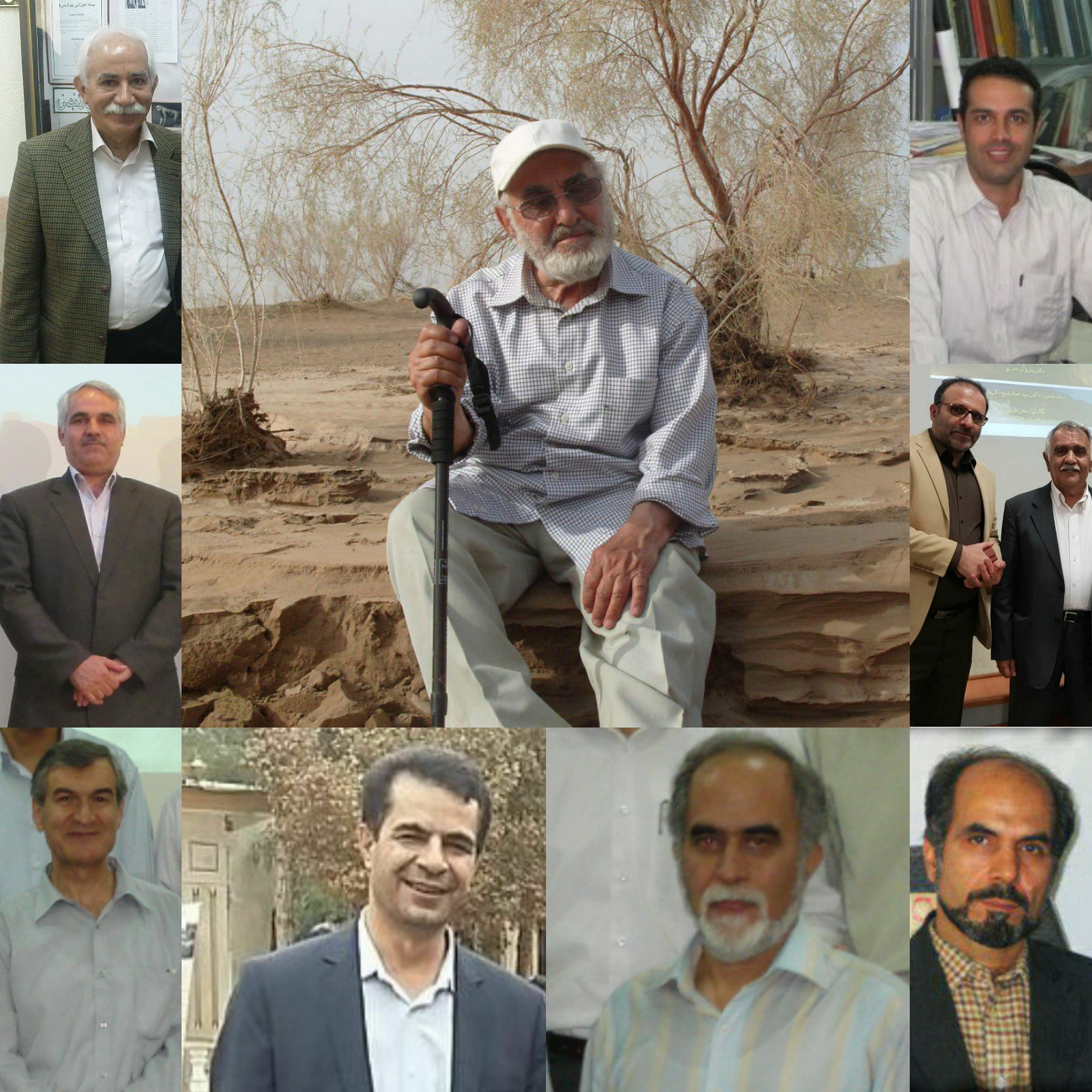
Science and Research Branch
Chemistry and origin of garnet in the granitoids and metamorphic rocks in the south of Mashhad (Khajeh-Morad, Khalaj and Dehnow)
Abstract
The study area is located in the northeast of Iran, and extends from the south to northwest of Mashhad city. This research compares the composition of garnet from igneous rocks including Khajeh Morad aplite-pegmatite, Khalaj pegmatite, Dehnow diorite-tonalite-granodiorite (DTG), with the garnets of Khalaj and Dehnow metapelites to investigate the chemical composition and origin of garnet in igneous and metamorphic rocks. Garnet grains in metapelites (Khalaj and Dehnow) have formed by metamorphic processes. They are characterized by almandine composition (alm~78-83%, sps~8-15%, Prp~5-8%, grs~0.5-1%), rimward decrease of Mn, CaO<4 wt% and MnO<12 wt%, and δ18O values of ~12.5-12.9‰, similar to garnets of worldwide metapelites. Garnet grains in aplite (Khajeh Morad) and pegmatite (Khajeh Morad and Khalaj) have a magmatic nature (crystallized from the host aplite-pegmatite melt). They are characterized by almandine composition (alm~41-64%, sps~31-39%, Prp~2-3%, grs~1.5-2%), rimward decrease of Mn, CaO<2 wt% and MnO>12 wt%, and δ18O values of ~10.3‰, similar to the magmatic garnets of worldwide aplite and pegmatite. Rimward decrease in HREE, Y and Mn concentrations for these garnets confirm their crystallization from the melt as they are related to lowering temperature, increasing volatiles and H2O activity in the late stage melts. Garnet grains in Dehnow DTG have formed by magmatic crystallization from the host DTG melt. They are characterized by almandine composition (alm~59-66, grs~13-23, prp~8-21, sps~3-10, adr~0-2), rimward decrease of Mn, CaO>4 wt% and MnO<5 wt%, and δ18O values of ~8.3-8.7‰, similar to the worldwide magmatic garnets of granitoids. Other petrographic and geochemical evidence favoring the magmatic nature of garnet in Dehnow DTG are: large grain size (1-2 cm), subhedral to euhedral grains, lack of reaction rims, different chemistry from metamorphic garnets, major element zoning (increasing Mn content from core to rim during temperature loss), similar chemical zoning of garnet and the its mineral inclusions, similar composition of magmatic mineral inclusions in the garnet and host rock, and the lack of metamorphic mineral inclusion and xenolith in the garnet and host rock. Although CaO content and Mn zoning pattern of garnets in aplite and pegmatite are similar to the metamorphic garnets (e.g. metapelites of Khalaj and Dehnow), but they contain higher MnO content and their δ18O values is similar to the magmatic garnets of Dehnow granitoid and worldwide case studies. Based on geothermobarometry of minerals and P-T pseudosection modeling, it is concluded that Khalaj and Dehnow metapelites were formed during a regional metamorphism at amphibolite facies the result of Paleo-Tethys closure and then were intruded by the granitoids, as evidenced by contact metamorphism halos around intrusions. Major and trace elements, and variation in oxygen isotope composition indicate that Dehnow DTG is a calcalkaline I-type granitoid formed following continental collision and due to melting of the subducting slab and mantle. The younger monzogranite of Khalaj - Khajeh Morad formed as a consequence of syn- to post collisional partial melting of hydrous metapelites, and the aplite-pegmatites are the late-stage differentiation products of these crustal melts.
دانشگاه آزاد اسلامی واحد علوم و تحقیقات
شیمی و خاستگاه گارنت در گرانیتوییدها و سنگهای دگرگونی جنوب مشهد
(خواجهمراد، خلج و دهنو)
چکیده
منطقه مطالعاتی در شمالشرقی ایران و در جنوب تا شمالغربی شهر مشهد قرار دارد. این پژوهش با مقایسه گارنت سنگهای آذرین شامل آپلیت - پگماتیت خواجهمراد، پگماتیت خلج و دیوریت - تونالیت - گرانودیوریت دهنو (DTG) با گارنت در متاپلیتهای خلج و دهنو به بررسی شیمی گارنت و خاستگاه آن در سنگهای آذرین و دگرگونی پرداخته است. بلورهای گارنت درون متاپلیتها (مناطق خلج و دهنو) محصول فرآیندهای دگرگونی است. ویژگیهای این گارنتها عبارتاند از: ترکیب آلماندین (alm~78-83%, sps~8-15%, prp~5-8%, grs~0.5-1%)، کاهش مقدار منگنز از هسته به حاشیه بلور، wt%12MnO< و wt% ۴CaO< و مقادیر δ18O در حدود 12/5 تا 12/9‰؛ مشابه گارنتهای درون متاپلیتهای نقاط مختلف جهان است. بلورهای گارنت آپلیت (خواجهمراد) و پگماتیت (خواجهمراد و خلج) ماهیت ماگمایی داشته و محصول تبلور از مذاب آپلیت - پگماتیتی میزبانشان است. ویژگیهای این گارنتها عبارتاند از: ترکیب آلماندین (alm~41-64%, sps~31-39%, prp~2-3%, grs~1.5-2%)، کاهش مقدار منگنز از هسته به حاشیه بلور، wt%12MnO> و wt% 2CaO< و مقدار δ18O در حدود 10/3‰؛ مشابه گارنتهای ماگمایی آپلیت - پگماتیتهای نقاط مختلف جهان است. کاهش مقدار Y، HREE و Mn از هسته بهسوی حاشیه بلور گارنت مؤید تبلور این گارنتها از مذاب به دلیل کاهش دما و افزایش محتوای مواد فرار و اکتیویته H2O در مذابهای نهایی است. بلورهای گارنت DTG دهنو طی فرآیندهای ماگمایی از مذاب DTG میزبان متبلور شدهاند. ویژگیهای این گارنتها عبارتاند از: ترکیب آلماندین (alm~59-66, grs~13-23, prp~8-21, sps~3-10, adr~0-2)، افزایش مقدار منگنز از هسته بهسوی حاشیه بلور، wt%۵MnO< و wt% ۴CaO> و مقدار δ18O در حدود 8/5‰؛ مشابه گارنتهای ماگمایی درون گرانیتوییدهای نقاط مختلف جهان است. سایر شواهد سنگنگاری و ژئوشیمیایی مؤید ماهیت ماگمایی این گارنتها عبارتاند از: اندازه بزرگ بلورها (cm 1-2)، شکلدار تا نیمهشکلدار بودن، نبود حاشیه واکنشی، شیمی متفاوت نسبت به گارنت دگرگونی، شباهت شیمی عناصر اصلی و مقادیر δ18O با گارنتهای ماگمایی در سایر نقاط جهان، منطقهبندی عناصر اصلی (افزایش مقدار Mn از هسته بهسوی حاشیه بلور در هنگام کاهش دمای تبلور)، هماهنگی تغییرات شیمی ادخالهای گارنت با منطقهبندی شیمیایی گارنت میزبان، شیمی همسان کانیهای ماگمایی زمینه سنگ با ادخالهای درون گارنت و نبود ادخال و زنولیتهای دگرگونی در گارنت و سنگ میزبان آن. اگر چه مقدار CaO و منطقهبندی منگنز در بلورهای گارنت آپلیت و پگماتیتها مشابه گارنتهای دگرگونی (مانند متاپلیتهای خلج و دهنو) است، اما این گارنتها دارای MnO بالاتر بوده و مقدار δ18O آنها مشابه گارنتهای ماگمایی درون گرانیتویید دهنو و سایر موارد مطالعه شده در سطح جهان است. بر اساس نتایج دما - فشارسنجی کانیها و رسم نمودار شبیهسازی شده دما - فشار، متاپلیتهای خلج و دهنو در طی دگرگونی ناحیهای در حد رخساره آمفیبولیت در هنگام بسته شدن پالئوتتیس تشکیل شدهاند و سپس نفوذ تودههای گرانیتوییدی موجب دگرگونی مجاورتی شده که تشکیل هالههای مجاورتی در اطراف این تودهها مؤید آن است. بر اساس ژئوشیمی عناصر اصلی و فرعی و ترکیب ایزوتوپ پایدار اکسیژن، DTG دهنو از نوع کالکآلکالن و نوع I بوده که پس از برخورد قارهای و بر اثر ذوب پوسته فرورونده و گوشته تشکیل شده است. از طرفی مونزوگرانیت جوانتر خلج - خواجهمراد محصول ذوببخشی همزمان تا پس از برخورد رسوبات متاپلیتی آبدار منطقه بوده و آپلیت - پگماتیتها نیز محصولات نهایی تفریق این مذابهای پوستهای هستند.
کلیدواژهها: گارنت، ژئوشیمی عناصر اصلی و کمیاب، ایزوتوپ اکسیژن، آپلیت و پگماتیت، گرانیتویید، متاپلیت.




